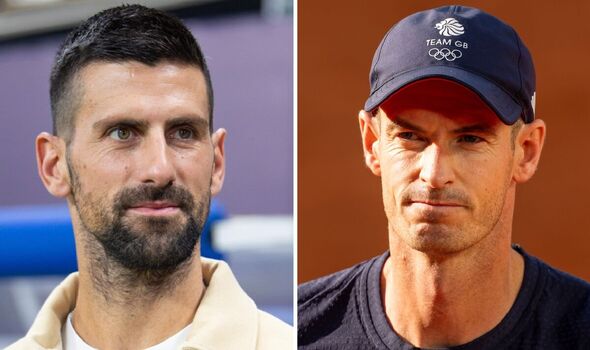
Europe, South America still dominate World Cup
July 6, 2014
Molyneux: Abortion and economic stagnation – Casper Star
July 6, 2014NORTH HAMPTON, N.H. — When my sixth tee shot veered sharply right, then bounced off the fairway, I was in trouble. My ball stopped on a tuft of grass and teetered above a small, muddy creek on the Sagamore-Hampton Golf Club. With one strong breeze, I would be taking a water-hazard-related, one-stroke penalty. Again.
Equally problematic, I couldn’t see a second-shot scenario that ended well. Neither could my playing partners. They figured my followthrough would propel me backward into the creek. I agreed. Ready to capture my splashdown, photographer Zack Wittman crouched a couple of yards away. “I’ve got to get this,” he said. There was anticipatory glee in his voice.
Continue reading below
If only I had longer legs, I thought. Better yet, if only I had a golf club.
Related
Photos
But this was FootGolf, a cross between soccer and golf, that left me standing creek-side with two options: short left leg or short right leg.
I went with my short right leg, a center-of-gravity-shifting lean forward and fingers crossed. I struck my ball with enough force to escape the rough. Miraculously, I remained upright and dry. Barely. The fact that my ball skipped down the fairway in the opposite direction of the hole seemed inconsequential. Five strokes later, I found the bottom of the cup for a triple bogey.
FootGolf is as simple and straightforward as its name implies. Soccer balls take the place of golf balls, but regular golf rules and etiquette remain in play. It helps to be long and accurate off the tee. A solid short game is necessary for any player with aspirations of par. Soccer experience and a strong leg make for lower scores, but they’re not needed to get through a round.
Placing FootGolf into a larger sports context, Sagamore Golf, Inc. president and co-owner Richard Luff said, “A lot of people are comparing it to snowboarding and what it did for the skiing industry. It’s really helped the skiing industry bring a new demographic to the slopes. FootGolf has the potential to do that with golf courses.”
Continue reading below
Similar to snowboarding, FootGolf sometimes exhibits a bit of irreverence, a playful wink and nod to traditional golf. FootGolf uses the slogan “Our Balls Are Bigger” and promotes itself with players dressed in flat, Ben Hogan-style caps and knee-high argyle socks. Thankfully, the classic dress was optional at Sagamore-Hampton.
When it comes to traditional golf, I side with Mark Twain and see “a good walk spoiled.” I like my golf courses with windmills and loop-de-loops and fake waterfalls and artificial grass. FootGolf brought me to a grown-up course for the first time in several years.
After a childhood spent playing soccer in towns and tournaments across the Northeast, I figured my FootGolf debut would be respectable. Not exactly. From my first drive, there was nothing remotely respectable about how I navigated the course. I fished my ball out of water hazards and missed 2-foot putts by a few yards, even though FootGolf has 21-inch-diameter cups.
In retrospect, since I was a couple of decades removed from kicking around a soccer ball, watching the World Cup was probably not the best FootGolf preparation.
With neither an impressive long game nor an efficient short game, I finished 18 holes with a 17-over-par 90, including one birdie (beginner’s luck on hole No. 2) and a couple of pars. Luff, who played the back nine with the group from the Globe, kindly described my FootGolf game as “consistent, conservative, and determined.”
Translation: My round wasn’t pretty, but I completed every hole. The only redeeming quality of the way I played was an unexpected ability to kick straight, albeit short, 20- to 30-yard tee shots.
Over and over again, I benefited from FootGolf’s simplicity, a quality that might help the game gain mass American appeal someday soon. It’s already popular in Europe. In June 2012, the first FootGolf World Cup was held in Hungary and featured 160 players from eight countries, including the United States. The first official US FootGolf National Championship will take place in 2015.
Sagamore-Hampton opened its FootGolf course the first week of June, becoming the only officially recognized 18-hole course in New England. The American FootGolf League, the sport’s US governing body, has accredited 160 FootGolf courses in 32 states.
To its advantage, the sport doesn’t demand swing coaches or countless hours at the driving range to make it through a round. It requires nothing more than the ability to kick a soccer ball. The Globe foursome proved that.
Sports department co-op Eric Russo, an avid golfer who never played soccer, steadily improved as the round progressed and finished six shots behind me. After the round, he acknowledged, “It did take awhile to get used to kicking the ball and finding touch on the shorter shots.” But “awhile” in FootGolf means roughly half a round, at least it did for Russo.
Or, as Sagamore Golf, Inc. vice president and co-owner Ty Sanborn, put it, “The learning curve for FootGolf is not nearly as high as it is for golf.”
And that’s by design. To ensure that first-time FootGolfers such as the Globe foursome could enjoy and finish a round, Luff and Sanborn created a FootGolf course that fits neatly into the front nine of the regular Sagamore-Hampton course. FootGolfers and traditional golfers all depart at reserved tee times, meaning all golfers play in succession and peacefully coexist.
With shorter yardage, 2,186 total yards for Sagamore-Hampton’s FootGolf course compared with 6,041 yards from the blue tees on its traditional golf course, kickers play at roughly the same pace as swingers. The longest FootGolf hole (No. 10) stretches 190 yards, while the shortest (No. 16) is 50 yards. For the most part, the FootGolf holes cover ground to the left or right of the traditional golf fairways. The layout features enough rolling hills, rough, water hazards, woodchucks, and aggressive geese to make a round interesting but not frustrating.
Said Sanborn, “It’s a new activity for nearly everybody and we wanted it to be easy and feel comfortable out there.”
To help FootGolfers acclimate to the new game, Sagamore-Hampton employs three trained FootGolf ambassadors. Yes, FootGolf ambassadors.
The ambassadors run through the basic rules, play the first hole with foursomes, and help explain FootGolf to traditional golfers, heading off any potential culture clashes. The Globe group headed to hole No. 1 with ambassador Ryan Gigliotti, a University of New Hampshire student who played high school soccer and still competes in college intramural games. For Gigliotti, the toughest part of the job is “instructing other golfers about what the FootGolfers are doing. You’ll get people who are like, ‘What the heck are they doing kicking a soccer ball on a golf course?’ ”
Readying for my first tee shot and receiving advice from Gigliotti about where to aim, I spotted a small gallery gathered outside the clubhouse. It was a cluster of about 10 curious onlookers with golf bags by their sides and what-the-heck expressions on their faces. They pointed to the orange FootGolf flag 105 yards away, the one discretely tucked left of the fairway. Even though I provided a poor model, they caught on to the game quickly.
While other tee shots sailed halfway to the hole, mine barely went airborne before rolling to a stop about 30 yards away. If I could have kicked longer drives in the direction Gigliotti suggested, I would have.
With the exception of my creek-side adventure, it would be roughly the same story tee shot after tee shot until the final four, hill-filled holes. Accustomed to playing on flat fields, the rolling terrain proved tricky for everyone. Sometimes the hills became great equalizers. While golf balls stick on hillsides, soccer balls simply roll away no matter how forcefully struck.
On the 17th hole, the tee was opposite a semicircular hill that looked like a large, grassy amphitheater. The flag stood hidden behind the hill. A couple of golfers in the Globe group tried to kick the ball straight over the far wall of the amphitheater. No luck. The balls rolled to the bottom. My strategy was to work around the top ridge with a couple of kicks. But my tee shot tumbled backward over the edge and landed at the bottom with the others.
Despite the way the soccer ball sometimes bounces, Luff said he finds FootGolf “more relaxing than I thought it would be because I tend to take golf a little too seriously and have a little too high expectations of my golf game.”
I arrived at Sagamore-Hampton a FootGolf skeptic. I left wondering when more FootGolf courses will open in the area.



Luke Humphries comment about Luke Littler says it all after Players Championship glory
Read more